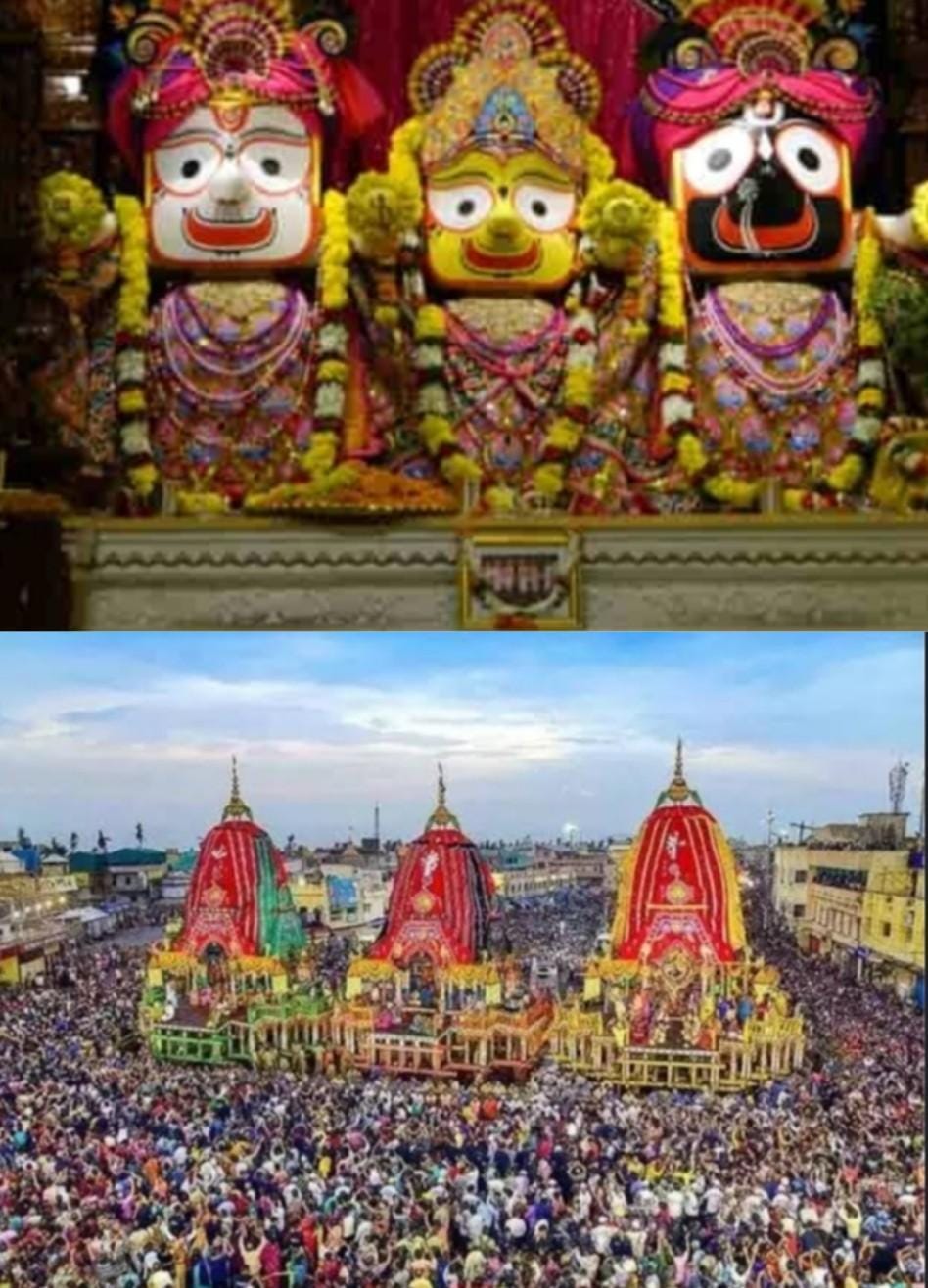
Jagannath Puri, one of India’s four major pilgrimage sites, is revered for its grand Rath Yatra, a chariot festival dedicated to Lord Jagannath. Located in Odisha, the temple is a significant hub for the Vaishnav community and is dedicated to Lord Krishna. Puri is often referred to as “Vaikuntha on Earth” and is known by various names such as Shankha Kshetra, Nilanchal, and Nilgiri. According to legend, Lord Krishna incarnated here as Nilamadhava. Like Dwarka, Puri is situated along the coast, with the deity residing alongside his elder brother Balabhadra and sister Subhadra. Uniquely, the idols of these three deities are made of wood and are ceremonially replaced every twelve years with replicas crafted from sacred trees.
The Rath Yatra, which begins on the second day of the bright fortnight of the Hindu month of Ashadha, marks a significant event when the deities travel in three grand chariots made of neem wood. Balabhadra’s chariot, known as Taladhwaja, is green and red; Subhadra’s chariot, Darpadalana or Padmaratha, is black or blue; and Jagannath’s chariot, Nandighosha or Garudadhwaja, is red and yellow. During the yatra, Balabhadra’s chariot leads, followed by Subhadra’s, with Jagannath’s chariot at the rear.
This festival embodies profound spiritual symbolism. According to the Vedas, Balabhadra represents the Rigveda, Jagannath the Samaveda, Subhadra the Yajurveda, and the Sudarshan Chakra the Atharvaveda. The current temple structure was initiated by King Anantavarman Chodaganga Deva of the Kalinga dynasty, reflecting a blend of architectural grandeur and deep spiritual heritage.
As devotees pull the massive chariots through the streets of Puri, they believe they are partaking in a divine journey, earning the blessings of the deities. The Rath Yatra of Puri is not just a festival; it’s a profound spiritual experience, drawing millions of devotees from around the world to witness and participate in this sacred tradition.
